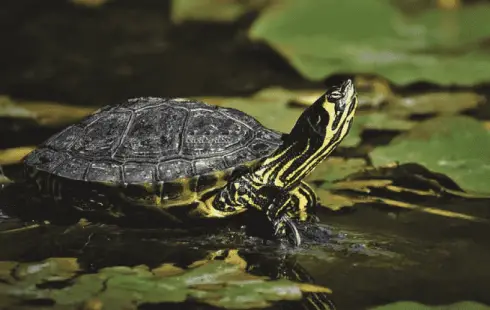
Crypto Investment Entry and Exit Strategies of Institutional Investors
Section: Business
 The low rainfall in recent years has not only severely reduced amphibians in Brandenburg, but also many reptile species. Although most of the populations were already threatened before 1989, there have only been sharp declines due to the drought years after 2019, the Ministry of the Environment in Potsdam said in response to a question from the AfD state parliamentary group.
The low rainfall in recent years has not only severely reduced amphibians in Brandenburg, but also many reptile species. Although most of the populations were already threatened before 1989, there have only been sharp declines due to the drought years after 2019, the Ministry of the Environment in Potsdam said in response to a question from the AfD state parliamentary group.
This has since been the case for all amphibian species. In order to secure their populations, there are protection projects for various species of reptiles and amphibians. These included the European pond turtle, the green lizard, the adder and various amphibian species.
Only recently, the nature watch and the Nature and Biodiversity Conservation Union (Nabu) in Brandenburg had sounded the alarm about the decline in amphibian populations.
Between 2014 and 2018, the nature watch rangers would have counted around 39,000 animals at the 33 protective fences, in 2021 only 13,500. The Nabu spoke of a decline in amphibian populations of 60 to 100 percent.
According to the ministry, populations of green toads, natterjack toads, fire-bellied toads, grass frogs, the little water frogs and adders have declined significantly. There were still positive trends from 1990 to 2019 for the green lizard and the European pond turtle, he added.
The deciding factor, according to the ministry's assessment, was protective measures. "Phased positive trends" had also been registered during this period for the species pond newt, spadefoot toad, tree frog and moor frog, as well as the sand lizard.
The greatest threats to various amphibian and reptile species are reportedly due to the loss and degradation of their habitats. For example, more and more natural areas are being cultivated and spawning waters are being affected by fertilizers and pesticides. Mechanical land cultivation and road traffic would also have negative consequences. Some native populations would be displaced by immigrant species.
Image by Ralphs Fotos

Section: Business

Section: Arts

Section: Arts

Section: Business

Section: Business

Section: Arts

Section: Health

Section: Arts

Section: News

Section: News
Health Insurance in Germany is compulsory and sometimes complicated, not to mention expensive. As an expat, you are required to navigate this landscape within weeks of arriving, so check our FAQ on PKV. For our guide on resources and access to agents who can give you a competitive quote, try our PKV Cost comparison tool.
Germany is famous for its medical expertise and extensive number of hospitals and clinics. See this comprehensive directory of hospitals and clinics across the country, complete with links to their websites, addresses, contact info, and specializations/services.
Join us for the 10th Summer Concert at the Heilig Geist Church, featuring the captivating sounds of two trumpets accompanied by a majestic organ. This concert will showcase works by renowned composers including J.S. Bach, A. Torelli, P. Franceschini, H. Purcell, and others.



No comments yet. Be the first to comment!